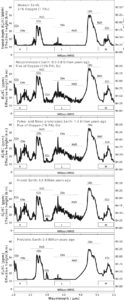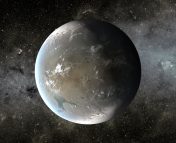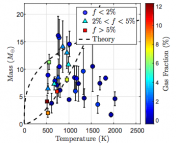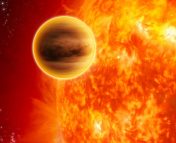In this series of posts, we sit down with a few of the keynote speakers of the 236th AAS meeting to learn more about them and their research. You can see a full schedule of their talks here, and read our other interviews here!
The Exoplanet Spectrum
Over 4000 exoplanets have been detected to date, but the search for extraterrestrial life remains ongoing. One of the most promising methods for finding life outside of our Earth involves characterizing the atmospheres of exoplanets and looking for specific biosignatures in their spectra. Biosignatures are molecules (like oxygen and methane) that we see on Earth as a result of biological processes, and finding them in the atmosphere of an exoplanet would indicate a strong possibility of life on that planet!

Dr. Lisa Kaltenegger from Cornell.
For Dr. Lisa Kaltenegger, the search for biosignatures extends past modern Earth. By simply looking for biosignatures similar to what we see on Earth right now, she thinks we are missing the broader scope of possible lifeforms. After all, life began to form on Earth 3-4 billion years ago, and it looked a lot different than it does currently. Kaltenegger’s research focuses on the Earth’s atmosphere during different geologic times: pre-life, life without oxygen, and different stages of life with oxygen. For each of these scenarios, she models the spectrum of an Earth-like planet for different host stars and dominant types of life (think grasslands, desert, oceans, extremophiles). With these models, Kaltenegger has created a database full of templates that observers can compare to their exoplanet spectra. An example of such spectra can be seen below. This vital research has earned her the Fred Kavli Plenary Lecture at this summer’s AAS meeting.

Models of the spectrum of Earth’s atmosphere through time. The top panel demonstrates present-day Earth, and oxygen abundance decreases with each panel moving downwards. Life is present in the top four panels, but not in the last panel. The spectra are different depending on the time, the type of life, and the oxygen abundance in the atmosphere. See Figure 2 in Kaltenegger’s paper, “High-Resolution Transmission Spectra of Earth through Geological Time”.
The Origin of (Dr. Kaltenegger’s) Life
Kaltenegger was born in a small Austrian town and never thought that she would work in astronomy and exoplanet research. That all changed, however, when she attended a conference in 1995, the same year as the first exoplanet discovery. It was there that she got involved in exoplanet research, interning with the European Space Agency Young Engineers program on the proposed DARWIN mission. This research led to her unique question: why would we only look for a modern Earth, instead of the many atmospheres that we know Earth has had? In trying to answer this question, Kaltenegger conducted research at the Center for Astrophysics at Harvard, led a team at the Max Planck Institute in Germany, and eventually founded the Carl Sagan Institute at Cornell as an Associate Professor.
Pieces of the Planet Puzzle
As the director of the Carl Sagan Institute, Kaltenegger leads an interdisciplinary team that includes 35 faculty across 15 different departments. Kaltenegger describes this broad collaboration as both critical to her work and lots of fun. “A planet is a complex puzzle, and the different disciplines all have pieces to the puzzle,” Kaltenegger says. In her own work, Kaltenegger spans the fields of astronomy, biology, chemistry, and even geology as she peers back at the young Earth and models its atmosphere.
Kaltenegger also likes to go on what she calls “exoplanet adventures”. In these adventures, she explores unconventional ideas like the habitable zone around non-Main Sequence stars and the possibility of life around white dwarfs (hint: it may be there, but it would be really hard to find!). Kaltenegger was also a part of the TESS mission proposal, and her models will be essential in analyzing the data from the upcoming James Webb Space Telescope and the Extremely Large Telescope.
Find the Fascinating
Kaltenegger tried out lots of different subjects and projects as a young student, and she encourages others to do the same. “Find something that is fascinating to you,” she says. Kaltenegger also emphasizes the importance of commitment, “if you show up, commit. Sit in the front row, ask a question if you have one. Contribute, and people will recognize your interest.” This advice is especially relevant for situations like AAS meetings!
If you find Dr, Kaltenegger’s science interesting (who doesn’t want to find aliens?!), check out her plenary talk, “Searching for Habitable Worlds: Challenges, Opportunities & Adventures” at 10 AM EDT on Monday, June 1st at #AAS236!




